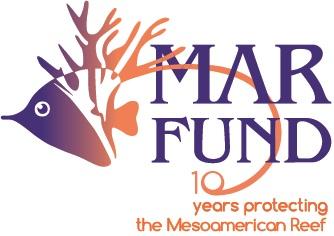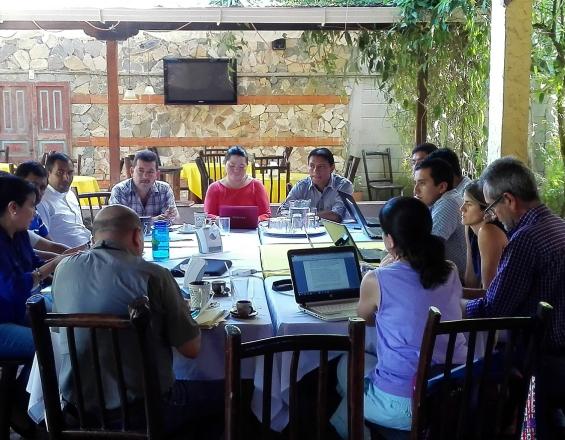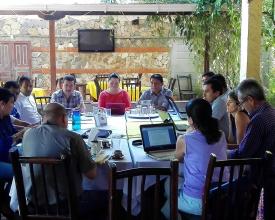
Integrated approach to regional reef conservation

The establishment of an integrated regional management for the Mesoamerican Reef System, the MAR Fund, provides financial stability for regional conservation initiatives. By encourgaing effective coordination, it helps to strengthen conservation of the area's ecological functions and aims to develop an interconnected and functional regional network of MPAs.
Contexte
Challenges addressed
A lack of inter-institutional collaboration and marine protected area management capacity makes it difficult to achieve an integrated management and conservation process. This includes regional inexperience sharing a common framework and the inability to adapt implementation activities to protected area management needs, such as surveillance, data availability, and fishing community involvement.
Emplacement
Traiter
Summary of the process
The involvement of stakeholders in the management of the areas is vital to obtain good results (building block 1). It is vital to provide economic alternatives to the stakeholders that live within a protected area. As an administrator, you can’t only think in terms of conservation of natural resources, but also need to consider the welfare of human communities (building block 2). In order to verify whether you are doing good work towards the sustainable exploitation of resources, you need to monitor the status of the resources periodically (building block 3). Management and sustainable use of resources need to be accompanied by the enforcement factor. Enforcement can be applied by committed stakeholders or by the staff of the protected area. There can even be multi-institutional enforcement teams to control and patrol protected areas (building block 4).
Building Blocks
Capacity building for participatory MPA management
The strengthening of the protected area managers of the four project areas is fundamental to this approach. There has been a special focus on capacity building in order to better prepare them for upcoming challenges. Capacity building activities addressed not only specific technical topics, but also how to approach and work with strategic partners. This was done through several meetings between authorities and stakeholders and resulted in the promotion of local partners in each of the protected areas that cooperate with the administrator providing their expertise and supporting the management and sustainable use of natural resources. Among these actors are municipalities, NGOs, fishing communities and other authorities.
Enabling factors
- Technical assistance
- Political will from the authorities
Lesson learned
- The direct involvement of stakeholders in the planning of management processes is fundamental to obtain good results.
- Every administrator of protected areas has its own rhythm of work, way of thinking and way of behaving when facing a new challenge or project.
- Different levels of support are required.
Viable economic alternatives
When coastal communities are collaborating towards the conservation of fisheries resources that surround them, it is necessary to provide them an alternative which they can live on. Somehow they need to be recognized for the effort they are doing by not extracting the resources and respecting it for a common property. Such economic alternatives depend on the dynamic of the area, the skills of the communities and the needs of the people that visits these communities. Several types of alternatives have been supported with the project. Some of these are:
- Protect our Pride. This initiative has trained and certified local youth of Roatan to become diving service providers in the island, which is the number one activity for tourists.
- Local stores. In Guatemala, three communities that supported and participated during the establishment of three fisheries recovery sites requested support to build local stores, one in each community, to create a local income.
- Cultural kitchen. In Belize, the group of women of the Punta Negra village was supported with the construction and equipment of a community restaurant that provides meals to every tourist that visits this beautiful site.
Enabling factors
- Technical assistance
- Will from the coastal communities
- Unsatisfied market
Lesson learned
- If you look carefully within the natural resources of the protected areas, the local actors and their needs, you can easily find a sustainable solution with very satisfying results.
Partnership approach to monitoring
Monitoring programs provide ongoing information on the state of the marine resources that can be used for adaptive management, to assist in prioritizing monitoring and research activities, and to inform management decisions. Populations of key conservation species were monitored to assess the success of MPAs, e.g. coral reef fish larvae have been monitored to determine the connectivity among protected areas of the MAR. Also, the baseline for mangrove and sea grass cover was established in the four protected areas. The resulting datasets and subsequent analyses provide essential information to inform adaptive management strategies and assess the management effectiveness of the marine protected area. The monitoring programs also included capacity building activities for staff, rangers and community members to conduct research and monitoring as well as to improve support for conservation activities.
Enabling factors
- Technical assistance
- Community interested in getting to learn from the natural resources
Lesson learned
- The energy and enthusiasm of a young group of people, even without any high studies, can generate very interesting information
Enforcement programme
Most management plans focus on ensuring the maintenance of healthy, functional ecosystems, through direct management of the marine environment, surveillance and enforcement and direct biodiversity management interventions. In order to achieve this, surveillance and enforcement programs have been supported and strengthened in the four protected areas of the initiative. Basically, the support has been focused on the economic provision so that patrols can be developed continuously. By providing funds to a regular number of patrols, the Protected Areas can secure matching funds with other organizations and develop inter agency patrols. Also, while increasing presence in their areas, the Protected Areas have managed to acquire greater credibility and trust among local actors/fishers, resulting in collaboration from them assuming the role of community rangers and providing information regarding overfishing, illegal fishing and illegal fishing methods.
Enabling factors
- Technical assistance
Lesson learned
- The lack of financial resources can cause the waste of great human capital
- Most of the administrators or co-administrators staff are well prepared and ready to develop fine enforcement programs
Impacts
The presence of protected area staff and their role has been improved and strengthened. The engagement and communication with the communities have also been enriched and are a significant step towards co-implementation of conservation and development activities. Fishers are participating in enforcement, directly or indirectly, by providing information to the authorities regarding illegal activities within the area. Thanks to a continuous participatory planning, defining responsibilities and joint scheduling of activities among all actors involved, ecosystems and key species are better managed and conserved, and regulations are enforced. The resource monitoring programs that are being implemented will assess and verify the impacts of this participatory management approach.
Beneficiaries
- Fisheries and protected area authorities
- Local communities
- Fishing organizations
Sustainable Development Goals
Story
The National Council of Protected Areas (CONAP) is the supreme authority for protected areas in Guatemala. To work around the country, CONAP is divided into regions. Each region is responsible for a certain number of protected areas. Punta de Manabique Wildlife Refuge is a coastal protected area in the North East of Guatemala and one of the target areas of the regional project. Due to lack of financial resources, CONAP did not have a specific working team dedicated to Punta de Manabique. At the beginning of the conservation initiative, CONAP realized that this was an excellent opportunity to establish a specific working unit to attend this area. So, as a partner of the initiative, they formed a team to deal with all of Punta de Manabique's management requirements. They purchased through the project office equipment and field gear in order to enable all management aspects and rented an office just for the area team. After forming the team, they even made some adjustments to it, replacing some of the members and getting better personnel. When formally established, they began to convene strategic meetings with local partners in order to organize and maximize their work and to achieve better results through their local Expertise. Today, the Technical Unit of Punta de Manabique leads a great team of organizations that works towards the conservation of the area, the sustainable use of its resources and the community development of the villages that are within the area.






